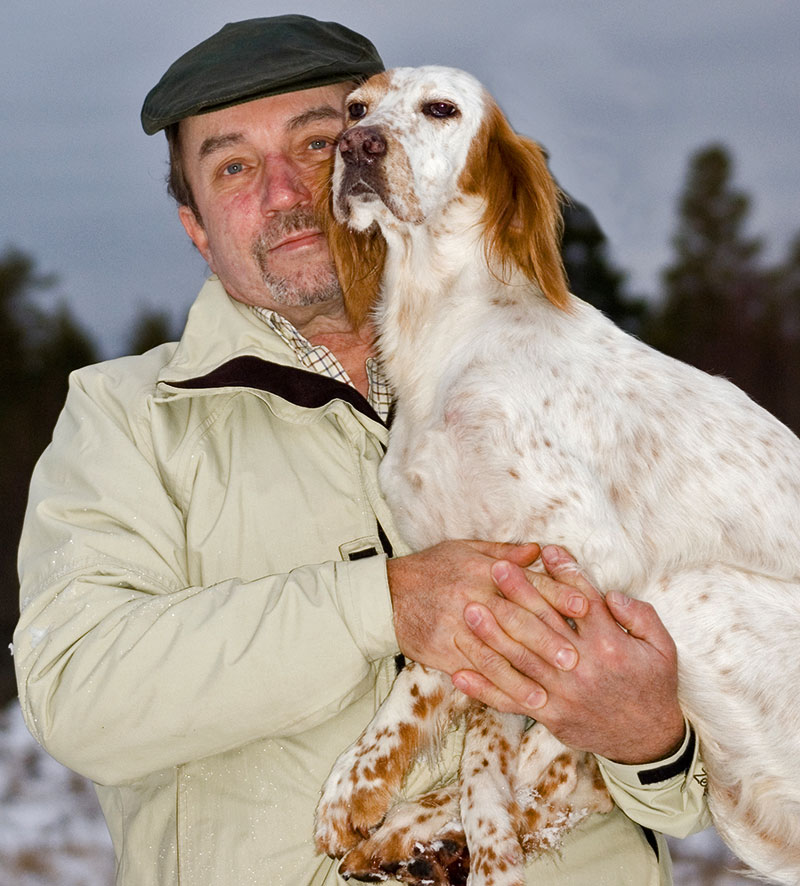Down the memory lane 2016
Strolling down the memory lane to the Vanity Fair... And then some philosophy about dog shows
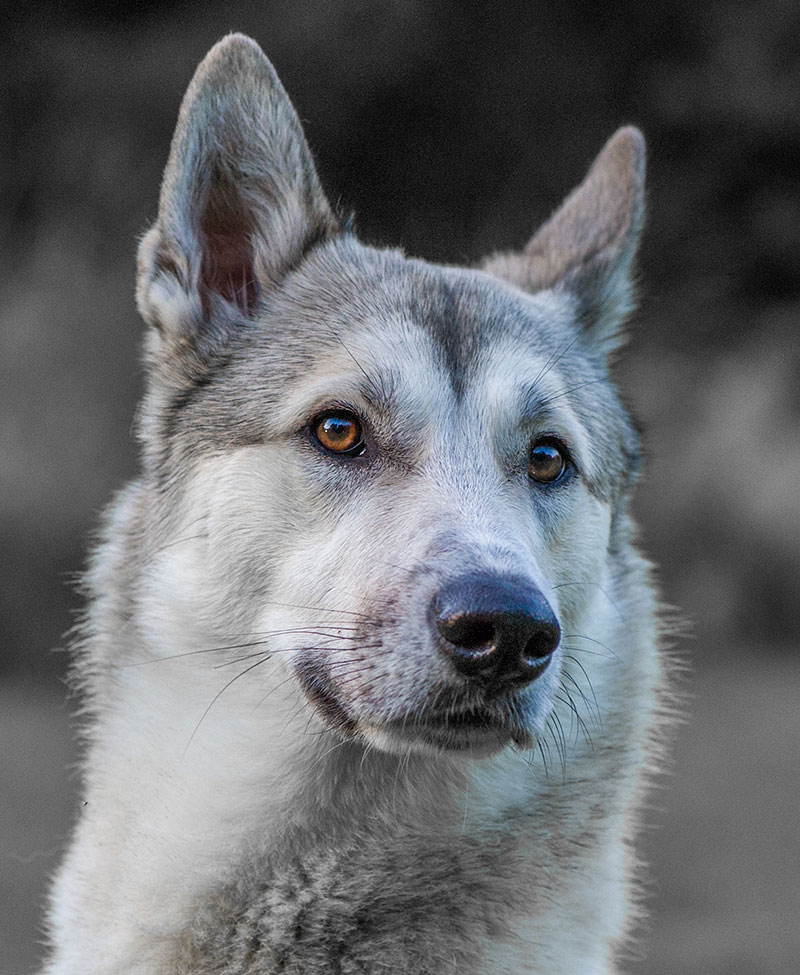
Before we gracefully glide into the rosy and bright life of the past, the way the memory lane most often is, there are a few things I like to show you, that are from the present spring and summer.
The first of these “things” is this wonderfully stylish young West Siberian Laika “Billy”. No, it is not a new member in our family, but he participated in the gundog obedience class we had in the beginning of the summer. I have always admired the calm mentality of the Laikas and the magnificent, “clean” appearance of theirs! To me they are the prototype to all dogs, an original model that has during thousands of years been reshaped over and over again into hundreds of different breeds of today – out of which only a few match the Laika in its “organic” appearance.
Well, that is just the idea that I have created in my fantasy and there may not be any truth at all in it. The Laikas are otherwise socially friendly and gentle dogs but rather self-willed as hunters and are used for anything from squirrel to boar and bear and moose. A truly versatile breed of gundogs!
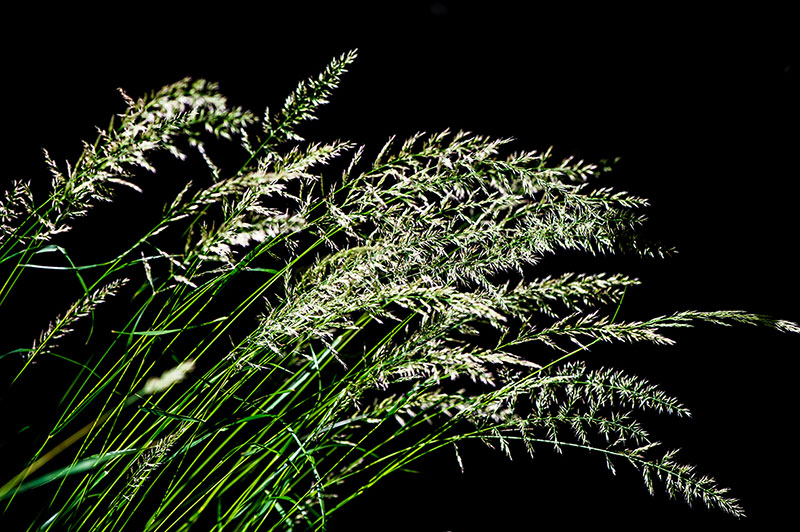
Since I have had some technical issues to bother my head with, I have not done too much photography this summer. The photo of this grass is however one that I like a lot. I noticed already from a long distance how the sunlight fell upon it from an angle that did not light up the dark forest in the background. Only some minor adjustments in an editor was needed to finish what the camera had caught, and I had something that I can call “Art deco”, whatever it means...? “Decorative art” perhaps?
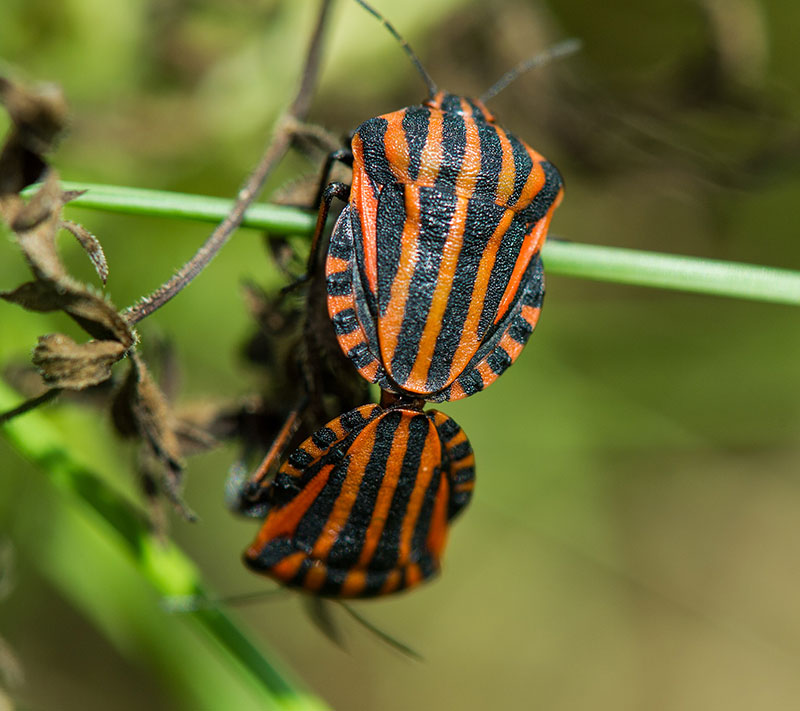
Notice the leather like skin (wing covers) of the beetle. I believe, without being sure, this family is hence called “Leather beetles” in Swedish. True or not, in everyday life they are better known for the defense system that consist of a very awfully scenting substance they can spray out when threatened. The substance contains cyanides that are familiar from a number of contexts from gold mining to murder. You are most likely to get one in your mouth when eating wild raspberries directly from the bush. An unforgettable experience it is, dear me!
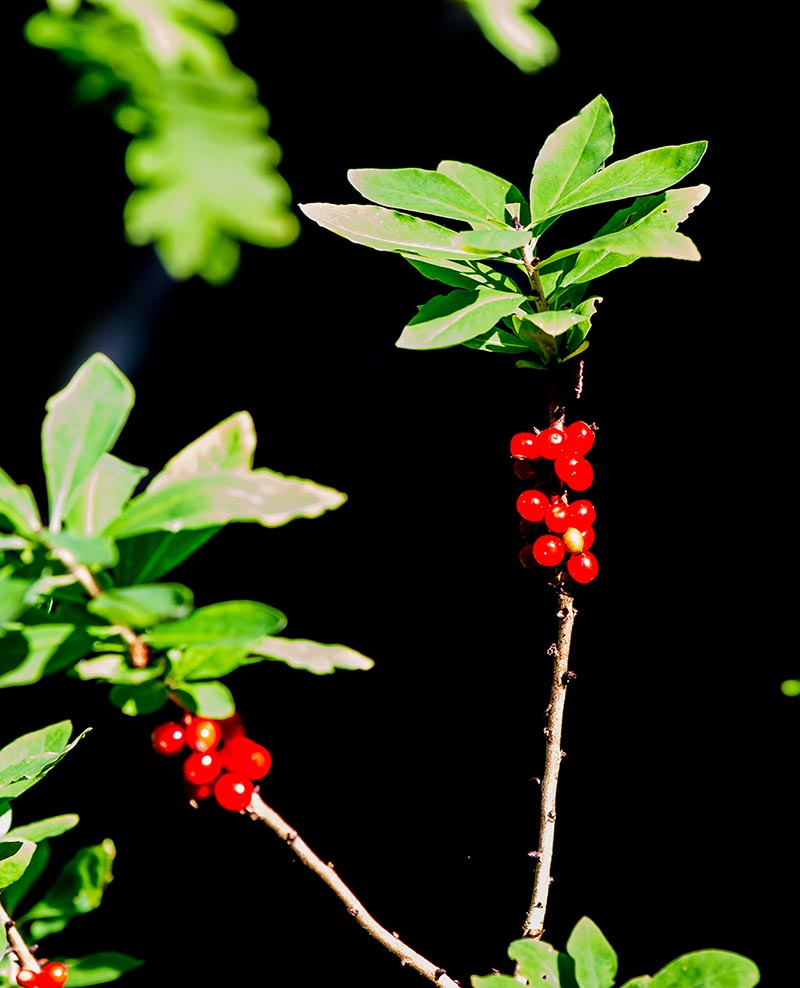
Another “Art deco” creation of mine. Not very good though, technically, but a nice try! To my knowledge these berries are toxic so do not try to eat them.
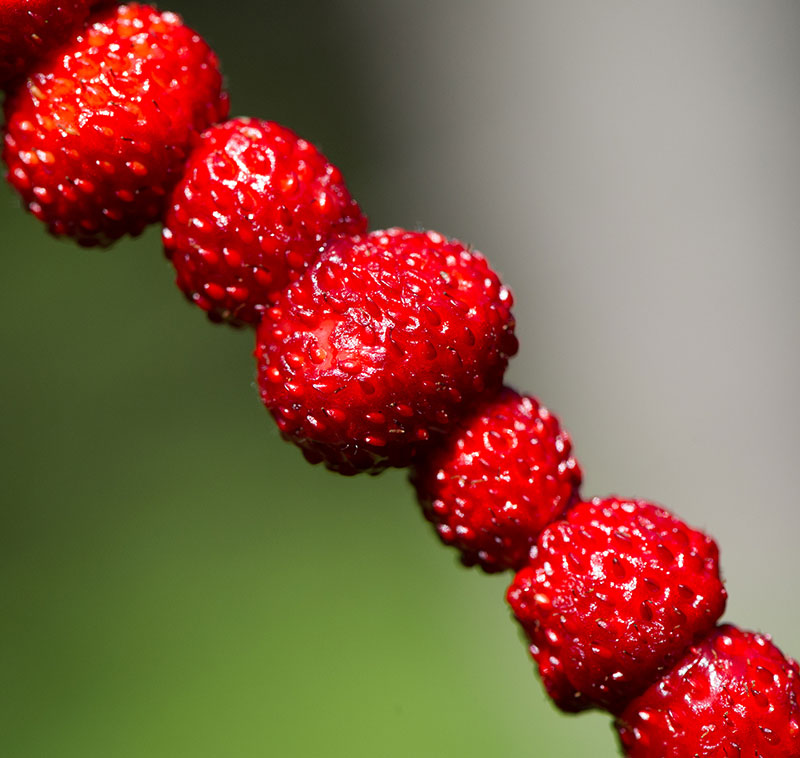
Wild Strawberries on a straw. When not on a straw they are called “Smultron” in Swedish and it has nothing to do with straws, just another name - like Raspberry… and that finishes this summer’s photographic expedition to this date.
The memory lane
When I was searching for very old photos for the chapter Vanity Fair to come, I stumbled into these photos of our late ES bitch Briz. She had broken her right front leg, could have been the autumn 2003 or 2004. It was a “clean” and uncomplicated fracture but the leg had to be in plaster and bandage for about 5 months. In the beginning she had to be very careful and any exercise was out of question. Fortunately I did not work on the sea that winter so I spent my time nursing her and had her with me everywhere in my car. She was taken to outings, the best we could, like here bedded in this wheelbarrow. Never seen a more cooperative and long-suffering patient. During that winter we of course came very close together. It brings a tear to my eye when thinking about it!
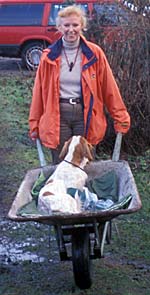
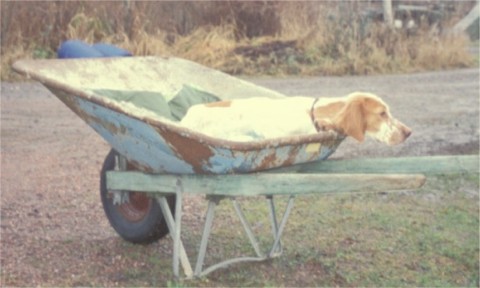
The vanity fair
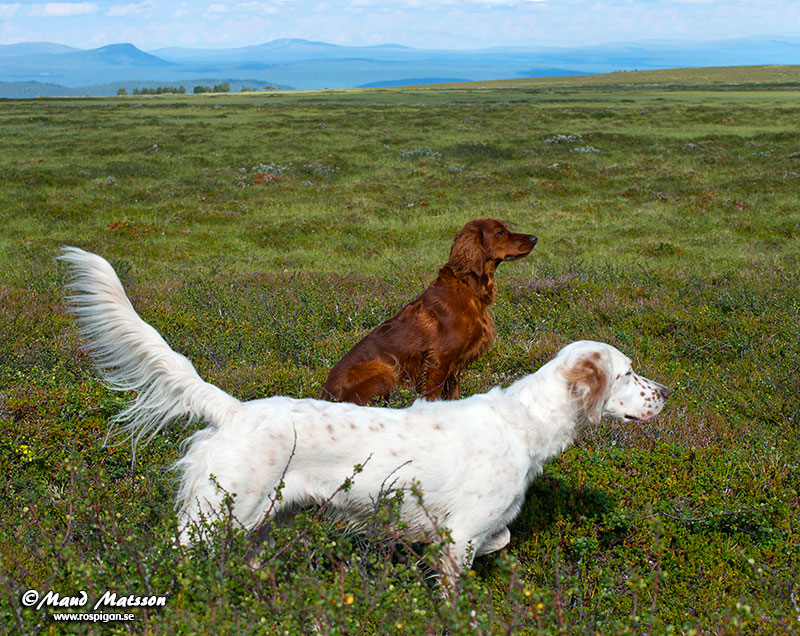
Our ES bitch Rospiga, the white one above, got her show championship award this spring. She is the second dog of ours who have got it. The first one was also an ES bitch, namely the late and magnificent Foxy!
I have written a lot about Foxy here and there on our website. Foxy was our first ES and when we got her in 1994 we were pretty much, if not totally unexperienced with the British pointing breeds. At least to me Foxy therefore came to be the template for an ES and what she did, how she behaved and what she looked like was typical ES characteristics for me.
Several years later I started to understand I was, for most part, rather wrong. She was not the average ES. No, she proved to be from the very high end both mentally and physically. We can limit the mentality part by stating that she had a very, no – an exceptionally well balanced mentality, which was disturbed only by a hint too much prey drive! This strong prey drive would have required an expert handler in order to make her a FTCH but we were not the experts she needed. However, despite of our lack of experience she, more or less on her own merits only, got the highest quality award in Open stake trials and that qualified her later to become a show champion.
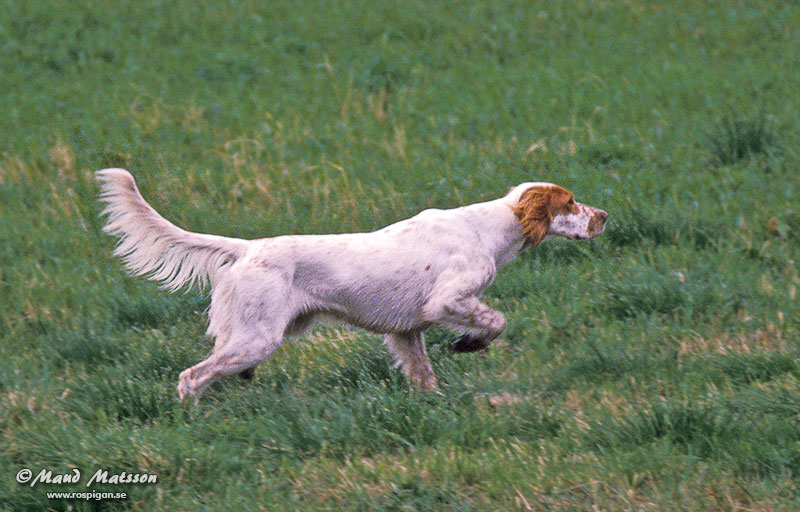
Now, compare the photo above of Foxy on point with the similar photo of Rospiga on point at the start of this chapter. In a brief comparison they both look quite similar. They are both SCH:s and they both should hence show the most superior appearance the breed can express – or what? Perhaps not, as we shall see later!
My first experience from dog shows came from the Stockholm Dog Show some 25 years ago, a huge, international one it was. To make a long story very short I felt like it was more of a “handler show” with the dog as only a kind of costume jewellery, than the opposite. The whole show was held on a planet that was totally alien to me, at least I felt that way. There and then I lost all my confidence for dog shows, but fortunately not for good.
The second and last show I have attended was a small one, held far out on the country side by the Swedish club for the working British birddogs. This one made sense, the dog was the middle point in the show, the judges were oriented towards the practical appearance of the working strains of the different breeds and I gained back some confidence for the “system”, so to say. Even though I have refused to attend any more shows Maud has sometimes been busy on the smaller shows and kept me updated with talk and photos.
In the first dog show in the modern history, June 28 – 29, 1859 in England, only working Pointers and Setters, owned by the shooting aristocracy, was shown. That was the first and last dog show ever that was totally controlled by the hunting community that is primarily favoring the working ability in their dogs. Already in the next show the same year the Vanity Fair had made its evil-minded entrance and slowly but surely started to destroy the working ability of many hundreds of breeds to today’s date. OK! That is one undeniable fact when looking at dog shows and show dogs in general. In a blink of an eye the hunters became the losers’ and never came back into the game again!
In the Nordic countries we are (so far….) in a fortunate position with our British pointing breeds since we have managed to preserve a rule for these breeds that demands them to have the highest quality award from field trials before they can become show champions. Also remember that we still have a small and rare strain of show judges that somewhat understands the working British birddogs. So up here in the north, if a Pointer or any of the Setters is a Show Champion it means that they are also very good working gundogs!
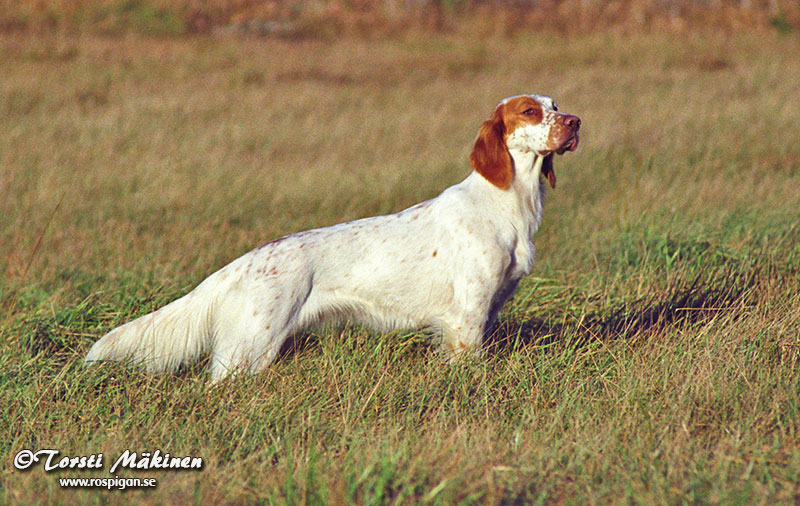
Now, let´s keep this fact in mind and forget everything else about dog shows. I will now compare only one working birddog; Foxy, with another working birddog; Rospiga, when I start my session of “deep philosophy” about what is very good and what is Excellent – Outstanding - Brilliant in a setter’s appearance!
So both Foxy and Rospiga have been found “excellent” by at least two different show judges (working dog oriented) at three different shows! Hence they both must in appearance correspond to the breed standard rather perfectly?
If the breed standard is written in a very vague manner, then they both do correspond, otherwise not!
As I mentioned in the beginning I had to revise my view of Foxy, step by step, almost during her entire life. For one thing it took me two years of watching her run in gallop to learn to see how she galloped in the rare but very efficient way – using the “flowing gallop”. This means that all the effort and energy she put into the gallop was directed forward and nothing was used to make her move up and down during each leap. This is a very efficient way for a dog to move. It saves energy and is one of the prerequisites for great stamina. It also gives the dog speed and style, some things that first class birddogs are supposed to show in great quantity.
To be able to do this I figure the dog must have a very specific body construction that favors such a way of moving. Still, no matter how well it´s physical condition promotes this way of movement it cannot utilize this quality unless it wants to do it! The intensive passion to be persistent hour after hour in rough terrain and nasty weather does not come from external traits only, but the dogs mentality is equally important, if not even more so! In dog shows the mentality of the object is judged within seconds – if it does not bite the judge it has an excellent mentality!
My point is that Foxy was “superior” in game finding ability, speed, style, mental and physical stamina, social behavior and appearance, and she was this way most, if not all of the time during her entire life. She was shown the last time when she was 13 years old and got resounding cheers in the veteran ring. The same year she took the better half of the Gotland island when she was let for a “little run” at a field trial (when Maud trialled Foxys daughter Briz). Tanned field triallers and their from work hardened dogs held their breath at the sight of this unsubdued old warrior going like a ghost rider over the land!
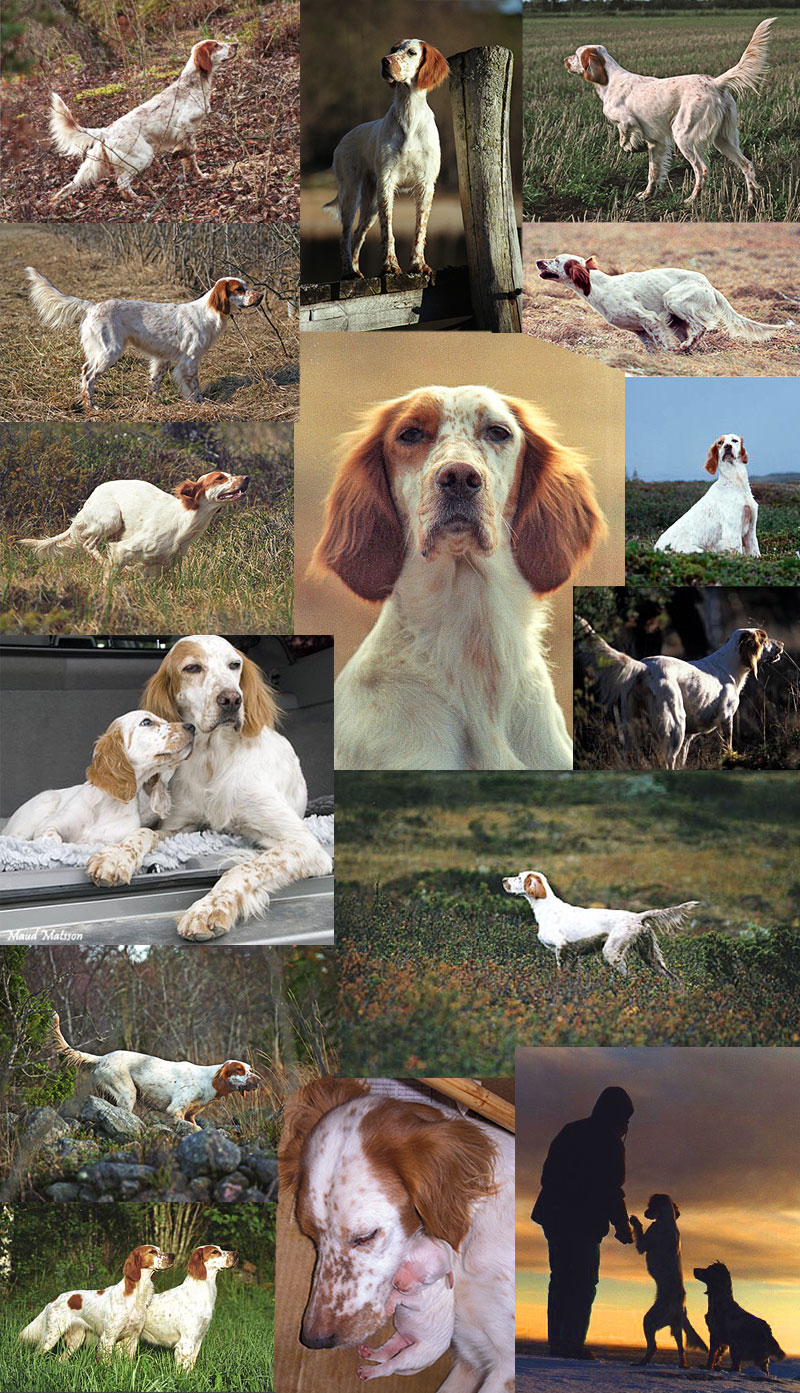
Foxy was stylish in every situation. In many situations she was both stylish, noble, dignified, even a bit royal in her being, but always, always friendly and gentle towards both man and beast! Her friendliness came from her courage and self-confidence, she never believed she was second to someone and hence did not ever have to use any aggressive gestures, the usual sign of mental weakness. Everything around her was, as the most natural thing in the world, for her only, including other dog’s points! Nevertheless, like magic, she never got into trouble since other dogs saw her as the undisputed leader. Not that she was in any way a dictator but more like a respected headmaster. All this made her truly worthy of the title Show Champion – provided we can give the title a new meaning! |
Rospiga - and I do not say this because I want to cast any shadow over her (that would be the last thing on my mind) - may have the angles and volumes and coat and paws and teeth and the rest needed for a good English setter, but despite of that fact she is nowhere near Foxy; if we look at overall appearance, mental and physical- (- endurance, speed and style) and social performance. Rospiga is more like a working springer spaniel in both body and mentality and socially. Efficient hunter she is, yes, and pleasing to the eye, yes, but if Foxy was found to be an excellent setter – how come that the so very much different Rospiga also is found to be an excellent setter?
This does not mean that she would do perfectly as a working spaniel, but she is just a tiny bit inclined in that direction, so to say. The setter’s ancestors were spaniels so there is nothing wrong or strange in that. What it says is that Foxy and the rest of her strain and ilk just have evolved further from their origin and are closer to the ultimate English setter, as described by their father and creator Edward Laverack!
So why do these two dogs that actually are so far apart in their traits, and seemingly only have the game finding ability and “the point” in common, get the same judgement “Excellent” in dog shows? The question may only be relevant if we assume that the dog’s exterior is estimated for its influence on the dog’s physical performance, a performance that is essential for the dogs working ability on the hunting grounds!
I do not know a short answer to that question, but if this is a problem for somebody the solution would perhaps be as follows:
In a show (including one of the special shows for working birddogs) a dog cannot be given more than the “Very Good” award for appearance.
The “Excellent” award for appearance, that gives the dog the certificate for a potential Show Champion award, can only be given by a judge, a separate show judge or an specially educated field trial judge, that follows the dog in an Open stake or Winners Stake trial and actually see it working in terrain during a longer period of time. This would ultimately separate the wheat from the chaff!
(Well, “speed and style” is already to some degree estimated by the field trial judge but it adds nothing to the dogs show records).
This system would of course make it more difficult to make a SCH out of your dog. The way things are now you can basically do it on Facebook by getting hints of which judge favors what type of a dog and from that info show your dog to these particular judges only! In addition; it is already very difficult to make a FTCH so why should it be easier to make a SCH? The advantage would be that the SCH:s would get a higher status and be more comparable to each other, like the FTCH:s are = comparing the best to the best! No more “pointing pigs” among the true aristocratic noblesse, if you know what I mean!
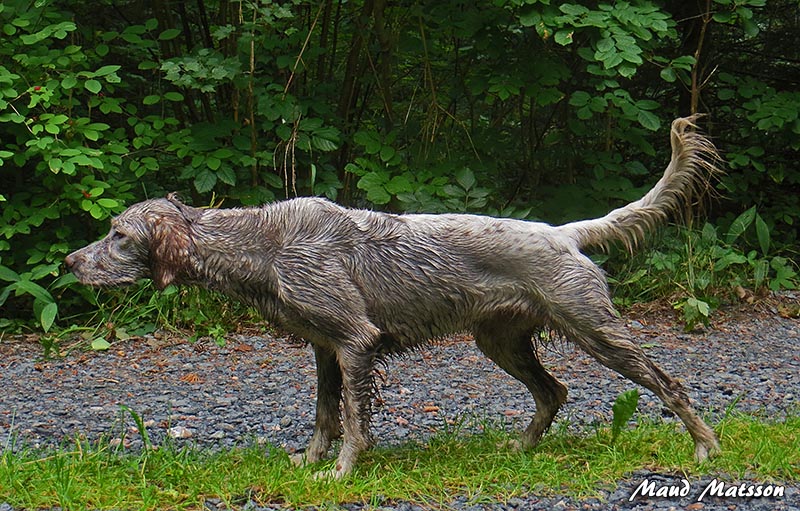
Now, before you send a cruise missile or an Animal Rights group to get rid of me, remember that this is a mere philosophical discussion only, from my side. To a technician like me a recommended 0.25 mm clearance is just that and nothing else! This way of strict thinking can of course never be applied to any living creature; let it be a plant, a dog or a man. Nevertheless, it is fun to try new approaches to all kinds of problems, let be that they, I mean the problems, might just as well only be more imagined than real!

Another potential show champion... eh?
© Text: Torsti Mäkinen.
© Foto: Torsti Mäkinen & Maud Matsson
Back to Torstis Corner, www.rospigan.se
